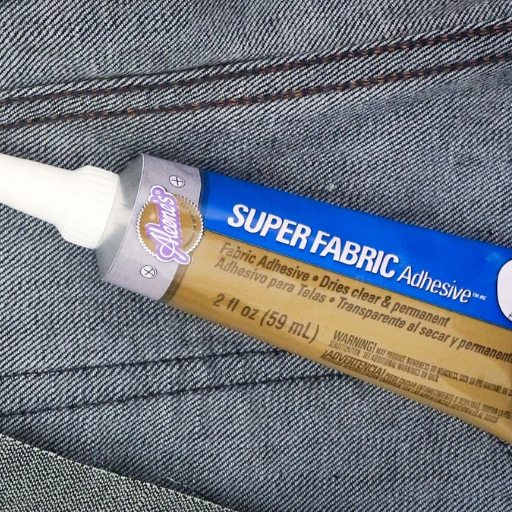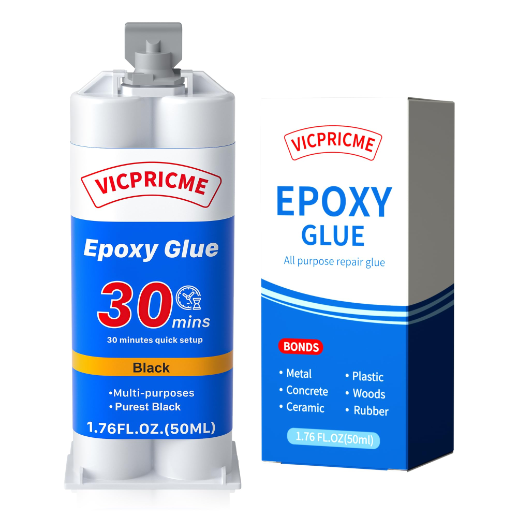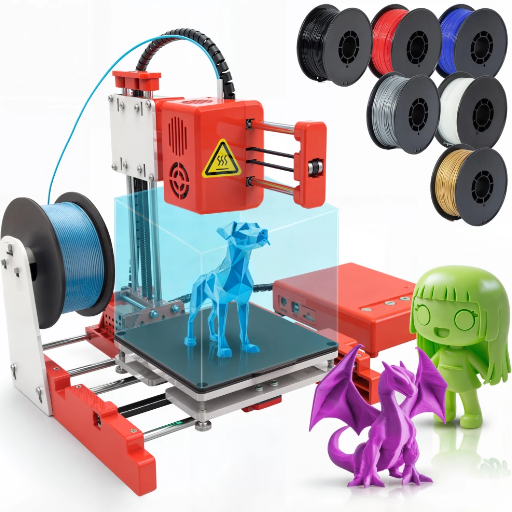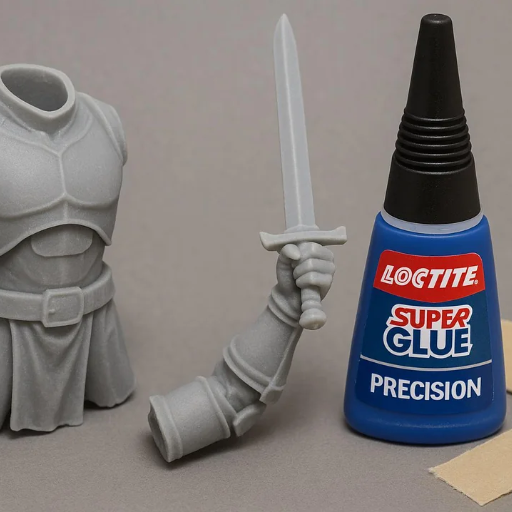Super glue is an astonishing adhesive that is best known for how strong it is and for its quick bonding capabilities making the glue the perfect solution for an array of repair problems. Despite its extreme benefits, the glue can become problematic when it sticks to the skin. This guide presents practical and safe methods to remove superglue from a variety of materials without damaging them. It combines the understanding of the chemical properties of super glue with certain techniques to remove the glue from different surfaces, equipping the readers with knowledge to handle any sticky situation. Whether it is a minor spill or a disastrous mishap, these expert tips and tricks will aid in providing a successful resolution.
How to Remove Super Glue from Surfaces?

Removing superglue from surfaces requires a combination of appropriate materials and techniques to prevent damage while effectively dissolving the adhesive. Begin by testing the surface material to determine its resistance to cleaning agents. For most non-porous surfaces, acetone is highly effective; apply a small amount of acetone-based nail polish remover onto a cloth or cotton swab and gently dab the affected area. Allow it to sit momentarily to weaken the bond before carefully scraping off the glue with a plastic scraper or a non-abrasive tool. For porous materials such as wood, avoid acetone and instead use a mixture of warm water and mild soap, applying it gradually until the glue loosens. Always proceed with caution and conduct a spot test on an inconspicuous area to ensure the surface is not damaged in the process.
What are Effective Methods to Remove the Glue?
- Acetone-Based Nail Polish Remover
One of the most trusted solutions for dissolving superglue is acetone, commonly found in nail polish removers. Apply the acetone to a cotton ball or cloth and gently rub the affected area. This works particularly well on non-porous surfaces and skin. Avoid use on delicate or painted surfaces as acetone can cause damage.
- Soap and Warm Water
For super glue on the skin, soaking the area in warm, soapy water can help loosen the bond. Combine warm water with dish soap, and let the area soak for 10-15 minutes. Then, gently peel or rub the glue away without irritating it.
- Rubbing Alcohol or Isopropyl Alcohol
Isopropyl alcohol is another effective solvent for superglue. Dab the alcohol onto the glue, allowing it to penetrate the bonding area, then scrape or wipe the residue away carefully. This method is ideal for surfaces like plastic, glass, or metal but may require patience.
By leveraging these methods, and understanding the materials involved, you can handle super glue mishaps with precision and confidence. Always test any solvent on a small, inconspicuous area before full application.
Can Acetone Help in Getting Super Glue Off?
Yes, acetone is highly effective in removing superglue. Acetone works by breaking down the cyanoacrylate adhesive bonds in super glue, making it easier to remove. To use acetone, apply a small amount to a cotton swab or cloth and dab it directly onto the glue. Allow the acetone to sit for a few minutes to soften the adhesive. Afterward, gently scrape or peel off the glue. For skin, acetone should be used cautiously by applying a minimal amount and washing the area thoroughly with soap and water afterward. While acetone is efficient, it can damage or discolor certain materials like painted surfaces, plastics, or fabrics, so testing on an inconspicuous area is recommended before full application.
Are There Any Alternatives to Acetone?
There are many substitutes for acetone in glue removal depending on the surface and material. Isopropyl alcohol aka rubbing alcohol works as a good substitute as it can soften glue and make it easier to peel away the surface. Just dampen a piece of cloth or cotton swab with the alcohol and gently rub the affected area. Another method is using vinegar which serves a dual purpose of being a natural solvent as well as safe for more delicate surfaces. Just soak the vinegar in warm water and apply it to the adhesive area to loosen the glue’s bond. Soap can also be applied along with warm water, especially for the skin, as soaking the skin loosens the glue bit by bit over time. Oils can also be used like baby oil or cooking oil, by slowly rubbing them over the surface to break down the stubborn glue. While these alternatives are mild, they require a greater amount of time and patience compared to acetone, regardless, it is always helpful to do a small hidden patch test first to see if the surface isn’t damaged.
What Are the Best Products Used to Remove Super Glue?

If you need to remove super glue, acetone remains the most reliable option. It is easily the most effective element for dissolving bonds as it is found in nearly all nail polish removers. Another effective alternative, particularly for less durable surfaces, is Isopropyl alcohol. Acetone is not too natural and applies to some harsh categories. If you wish to go with something natural and mild, oil or vinegar works, though, oil requires a lot of time and effort. Along with those, there is an arsenal of professional-grade removers aimed at tough glues, and are super effective. Read product instructions to ensure your sensitive surface is not damaged. Do perform a patch test beforehand.
How Does a Glue Remover Work?
The functioning of a glue remover is based on the concept of breaking down the adhesive bonds that hold the glue together. Most glue removers, like those based on acetone, chemically weaken these bonds to make peeling or scraping the glue easier. Acetone breaks acetyl and other bonds, dissolves polymer bonds, and thus assists in glu substrate cohesion disruption. For milder agents like vinegar or oil, the glue grips the surface, but over some time, the agent softens the glue, allowing for easier removal. Many commercial glue removers use solvents or, similarly, enzymatic agents crafted to glue specific types of adhesives, which guarantees effective unattaching with a minimum of quality damage. To ensure better results and security, product instructions must always be followed.
Is Nail Polish Remover Effective?
Nail polish removers, especially those with acetone, can indeed work well to dissolve the glue in many scenarios. Acetone will break down the chemical bonds of the glue, which makes it easier to dissolve and separate from surfaces. This method is especially suitable for glass, metal, and plastic. Of course, one has to be careful because painted wood and some plastics are also acetone-sensitive, meaning they will dissolve or discolor certain surfaces. The acetone method is best pursued using the dabbing method; pour a bit of the liquid on a cloth or piece of cotton and rub it on the glue, but only after a test patch is done first. This method guarantees that the most amount of glue is removed while minimizing paint damage. Always exercise proper etiquette for nail polish remover like working in open areas and using gloves to cover your hands.
What Should You Look for in a Glue Remover?
Try to pay special attention to a glue remover’s composition, surface compatibility, and ease of use. Effective solvents such as acetone, isopropyl alcohol, or even citrus-based compounds work tremendously when trying to tear down adhesive bonds. They also work for surfaces that require delicate treatment, as some removers such as those containing acetone can cause chemical burns on painted and softer surfaces. For convenience, sprays, gels, or wipes give a uniform application and excel in convenience, but be sure to read the instructions carefully first. If operating in sensitive areas, or around children and even pets, consider non-toxic options. I am sure you will have no problems doing your proper research. Test the product in small, inconspicuous places and I assure you will not be disappointed by the results.
How to Remove Super Glue Stains from Fabric?

As for super glue stain removal from cloth fabric, the first step is testing a tiny part of the fabric before removing the stain to check the compatibility with the removal method. Scrape off excess glue using a blunt razor or credit card. Use a very small spot of acetone or nail polish remover containing acetone and place it right on the super glue stain but be careful because it can cause discoloration on some materials. Use a clean piece of cloth to pat the area and do not wipe the area. Rinse the remaining parts of the spot in cold water and wash the fabric as you normally do. A professional cleaning service can offer help for lace or other non-acetone-friendly materials.
What Steps Should You Follow to Remove Glue from Clothing?
Removing glue from clothing requires a careful and systematic approach to avoid damaging the fabric. Follow these steps:
- Check the Care Label – Before proceeding, review the fabric care label to ensure the material can tolerate the removal process, particularly the use of chemicals like acetone. Some delicate fabrics may require professional cleaning.
- Scrape Off Excess Glue – Use a blunt object, such as a dull knife or a credit card, to gently scrape away any hardened glue on the fabric’s surface. Be cautious to not stretch or damage the fibers.
- Apply a Solvent (if Safe) – For glue types like super glue, apply a small amount of acetone or nail polish remover containing acetone onto a cotton swab or cloth. Lightly dab the stain without applying excessive pressure. Test the solvent on an inconspicuous area first, as it may cause discoloration or damage, especially on synthetic or colored fabrics.
- Blot the Area – Use a clean, dry cloth to blot the treated area. Avoid rubbing, as this could spread the glue or embed it further into the fabric.
- Rinse with Cold Water – After successfully loosening the glue, rinse the area under cold water to wash away the solvent and glue residue. This step helps to prevent potential chemical reactions with detergents later.
- Wash and Inspect – Launder the fabric as per the care instructions, ensuring to check for any remaining glue before drying. Drying can cause glue remnants to harden permanently.
For stubborn stains or delicate materials such as lace or silk, consulting a professional cleaner is highly recommended to avoid fabric damage.
How to Wash the Fabric After a Spill?
- Act Quickly – Address the spill as soon as possible to prevent it from setting into the fabric. Fresh stains are easier to remove than dried or settled ones.
- Blot the Spill – Use a clean, absorbent cloth or paper towel to gently blot the area. Do not rub, as this can push the liquid deeper into the fibers.
- Pre-Treat the Stain – Apply a stain remover, mild detergent, or a solution of water and white vinegar to the affected area. Allow it to sit for a few minutes to break down the stain.
- Rinse Thoroughly – Rinse the treated spot with cold or lukewarm water to remove the stain remover or detergent. Avoid hot water, as it may set certain stains, such as protein-based ones.
- Machine Wash or Hand Wash – Depending on the fabric type and care instructions, wash the garment using an appropriate cycle or by hand. Use a detergent suitable for the fabric and the type of spill.
- Inspect Before Drying – After washing, check if the stain is completely removed. If traces of the spill remain, repeat the pre-treatment and washing process before drying. Drying with a remaining stain can cause it to set permanently.
For specific spill types like oil, wine, or ink, consult stain-removal guides tailored to the substance for optimal results. Always refer to the care label on the fabric to ensure proper washing procedures.
How to Remove Super Glue from Metal?

- Gather Materials – You will need acetone (commonly found in nail polish remover), a clean cloth, warm soapy water, and a soft-bristled brush or sponge. Ensure the acetone is safe for the metal type by testing it on a small, inconspicuous area.
- Apply Acetone – Moisten a clean cloth with a small amount of acetone and gently dab it onto the super glue. Avoid saturating the surface to minimize potential damage to the metal.
- Loosen the Glue – Allow the acetone to sit for a few minutes to soften the glue. Use a soft-bristled brush or sponge to gently scrub away the residue. Avoid using abrasive tools that may scratch the metal.
- Clean the Surface – Once the glue is removed, clean the metal with warm soapy water to remove any remaining acetone or glue residue. Wipe it down with a dry cloth to prevent water spots.
- Inspect for Residue – Check the surface for any remaining glue. If stubborn spots persist, repeat the process as needed.
For delicate or specialty metals, consult the manufacturer’s recommendations to ensure the cleaning process doesn’t cause damage.
What Tools Can Help Remove Glue Residue from Metal?
To effectively remove glue residue from metal, several specialized tools and materials can simplify the process:
- Acetone or Nail Polish Remover – These solvents are highly effective in breaking down adhesive bonds. Apply with caution and ensure the surface is metal-safe.
- Plastic Scraper or Spatula – A non-abrasive scraper can help lift softened glue without damaging the metal surface.
- Soft-Bristled Brush – Use a brush to gently scrub away residue after applying a solvent. This is particularly useful for intricate or textured surfaces.
- Isopropyl Alcohol – Rubbing alcohol can dissolve glue residue and is suitable for many types of metals.
- Microfiber Cloth – Ideal for applying solvents, scrubbing the residue, and polishing the metal once the adhesive is removed.
- Heat Gun or Hair Dryer – Applying gentle heat can soften certain adhesives, making it easier to remove them without harsh chemicals.
Always test these tools in an inconspicuous area to verify compatibility with your specific metal type. For best results, combine tools and methods as needed to safely restore the surface.
Can Acetone-Based Nail Polish Remover Be Used?
Indeed, acetone-containing nail polish remover can effectively remove glue stains on metal surfaces. Acetone is a strong solvent that dissolves many types of adhesives. To apply properly, soak a cotton ball or microfiber cloth with the remover and place it over the area in question. Wait a moment so the adhesive has time to soften, then wipe gently. However, care must be taken because extended exposure to acetone may smear or ruin some finishes, especially on coated and anodized metals. Test in an unobtrusive spot first, and remember to ventilate the area being worked on. Use isopropyl alcohol or heating the surface for more gentle techniques.
Are There Any Precautions While Using a Scraper?
Working with scrapers on glue from metal surfaces can be damaging and should be done with care. First, make sure the scraper is made of a nonabrasive material such as plastic which minimizes the chances of scratching or gouging the metal. Always maintain a low angle with the surface while applying as much control as possible to the scraper to avoid digging into the surface. It is recommended to soften the adhesive beforehand by using a solvent or heat to minimize scratches. A thorough inspection of the surface should be performed as rubbing should be slow and thorough. Also, put on gloves for any injuries that might happen in the process or remove any loose parts that might ruin the surface being worked on.
How to Deal with Super Glue Residue on Skin?

To safely remove super glue residue from the skin, begin by soaking the affected area in warm, soapy water to soften the adhesive. Once softened, gently rub the skin with a pumice stone or a soft abrasive material to loosen the glue. If necessary, apply acetone-based nail polish remover to a cotton swab and lightly dab it on the residue, taking care not to overuse acetone as it can dry out the skin. After the glue loosens, wash the area thoroughly and moisturize to prevent irritation. Avoid pulling or peeling the glue forcefully, as this can damage the skin. Always handle acetone with caution and in a well-ventilated area.
What are Safe Ways to Remove Super Glue from Your Skin?
To extract super glue from your skin, the first step is to soak the area in warm, soapy water for 10 to 15 minutes so the adhesive can loosen. To remove the residue, scrub it with a soft, exfoliating tool and with your fingers. In case the glue is too stubborn, then an effective solution is an acetone-based nail polish remover. Dab it using a cotton swab but make sure not to excessively use it as it will dry out the skin or irritate it. Another option is natural oils such as coconut oil or olive oil which help dissolve the glue. Rinse off the glue with water and pat it dry after which apply moisturizer to soothe the skin. Avoid harsh scrubbing and peeling off the skin to prevent injuries. Only use acetone in open places and avoid sensitive areas.
How to Soften and Peel the Glue
Start to unstick and peel super glue by soaking it in warm, soapy water for 15 minutes to help soften the glue bond. For tougher adhesives, acetone-based nail polish remover works best if applied with a cotton ball while ensuring the skin around the area is well protected. Rub the area gently with a cloth, pumice stone, or exfoliating tool to encourage peeling without severe scrapping. Coconut or baby oil effectively aids in breaking the glue bond; the same effect can also be achieved with petroleum jelly. After the glue has been peeled off, make sure to clean the area thoroughly with warm water and put a moisturizer over to help rehydrate the skin. As a heads up, do not scrub or wipe harshly as that may lead to getting injured. Be cautious when using acetone around cuts and don’t use it near sensitive areas as well.
Can Warm Soapy Water Assist in Removing Glue?
Indeed, hot, soapy water does enhance the unsatisfactory task of elimination for many adhesives, including glue. The heat makes the glue softer while the soap helps dissolve its bonds in a much more easier manner. To perform this method, put the glued object into a heated solution or place a damp cloth over the glued area for a few minutes to allow the solution to seep. This method, however, may not work on stronger adhesives like Super Glue or Epoxy which tend to bond more intensely and would need additional solvents like acetone. The glue’s surface must be handled carefully to ensure the underlying surface is not damaged.
References
Frequently Asked Questions (FAQ)
Q: What expert tip can you provide to remove super glue residue effectively?
A: An expert tip for removing super glue residue is to use acetone or nail polish remover. Saturate a cotton ball with acetone and gently dab it on the glued area. This helps break down the adhesive for easier removal.
Q: How can I safely remove dried super glue from the skin?
A: To safely remove dried superglue from the skin, soak the area in warm soapy water and gently rub with a cloth. If needed, apply a small amount of petroleum jelly to the glue and rub until it loosens.
Q: What should I do if I accidentally spill Loctite super glue on fabric?
A: If Loctite super glue spills on fabric, blot with a cloth soaked in acetone, then wash with laundry detergent. Be sure to test a small area first to make sure it won’t damage the fabric.
Q: How can I remove superglue residue from plastic surfaces?
A: To remove super glue residue from plastic, apply a small amount of olive oil or petroleum jelly. Let it sit for a few minutes, then gently scrape it with a dull tool like a putty knife.
Q: What is the best method to remove superglue residue and stains from wood?
A: For wood, use a damp cloth with warm soapy water and gently scrub the area. If the glue persists, try using a rag with acetone, but be cautious to avoid damaging the finish.
Q: How do I remove superglue from glass surfaces without scratching?
A: Use acetone applied with a precise applicator like a cotton swab to avoid spreading. Gently wipe away the glue with a soft cloth to prevent scratches on the glass surface.
Q: What should I do if I need to remove super glue from metal?
A: To remove super glue from metal, soak a cotton ball in acetone and place it on the glue. Let it sit for several minutes, then gently scrape off the residue with a dull blade.
Q: Can vinegar help in removing super glue, and how should it be used?
A: Yes, vinegar can help remove superglue. Soak a cotton ball in vinegar, apply it to the glue, and let it sit. Gently rub the area to loosen the glue before wiping it away.
Q: What are some simple steps to remove superglue from a countertop?
A: For countertops, dampen a sponge with warm soapy water and scrub the area. If necessary, use a little acetone on a cloth, but be sure to test first to make sure it won’t harm the surface.
Q: How can I ensure the precise removal of superglue on delicate items?
A: For delicate items, use a gel-based adhesive remover for more control. Apply with a cotton swab for precision, and gently pat with a damp cloth to remove any residue.





















